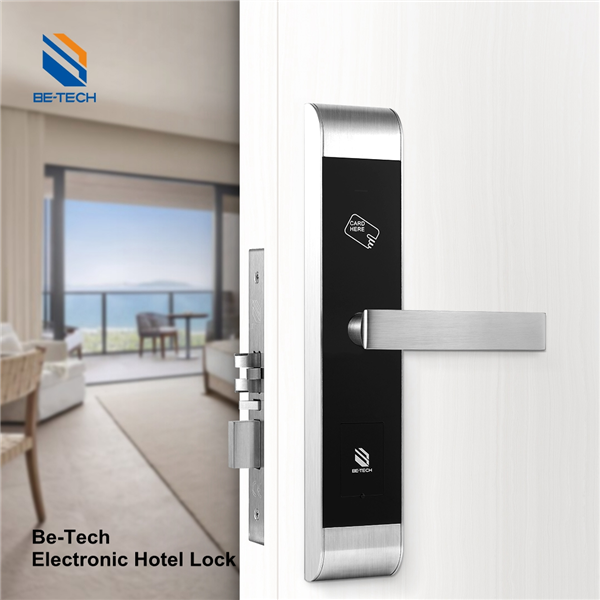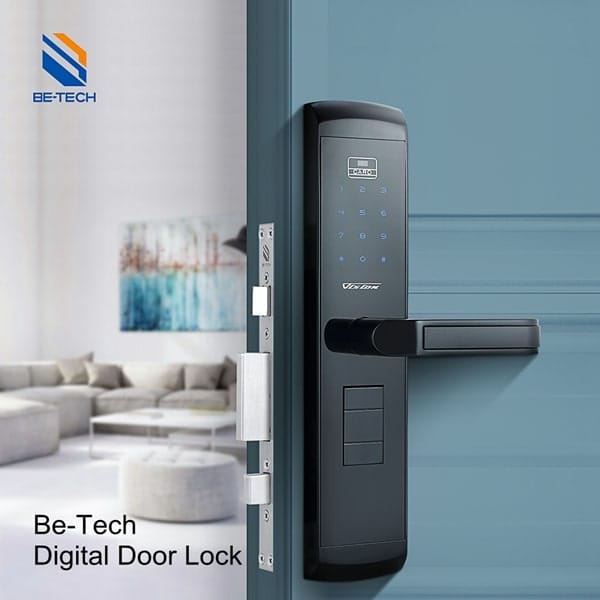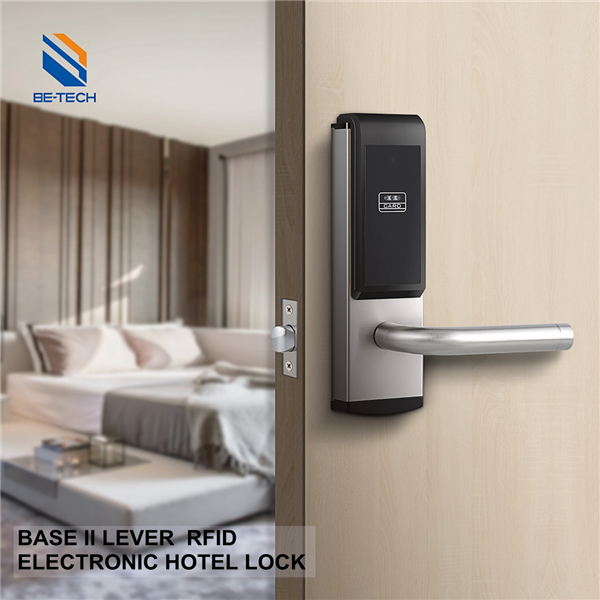In an era where guest safety and seamless experiences are paramount, selecting the optimal door lock system for your hotel is a decision that can significantly impact your business’s success. As we navigate the complexities of hospitality in 2024, the right lock system not only ensures security but also enhances guest satisfaction and operational efficiency. This comprehensive guide will help you navigate the evolving landscape of hotel door lock systems, empowering you to make an informed decision that aligns with your property’s unique needs and future aspirations.
The Critical Role of Door Lock Systems in Modern Hospitality
The importance of robust door lock systems in hotels cannot be overstated. According to a 2023 report by the Global Hospitality Security Association, hotels with outdated lock systems are 3.5 times more likely to experience security breaches, resulting in an average financial loss of $275,000 per incident. Beyond financial implications, these breaches can severely damage a hotel’s reputation and guest trust. As such, investing in a state-of-the-art lock system is not just a security measure—it’s a critical business decision that can significantly influence your hotel’s success and longevity in the competitive hospitality market.
Understanding the Evolution of Hotel Door Locks: A Journey Through Time
The transformation of hotel door locks mirrors the rapid advancement of technology in the hospitality sector. Let’s explore this evolution:
- 1960s-1970s: Mechanical Locks
- Traditional key-and-lock systems dominated the industry.
- Limitations: High key replacement costs, security vulnerabilities.
- 1980s: Magnetic Strip Cards
- Introduction of programmable access.
- Enhanced tracking capabilities for improved security.
- 1990s-2000s: RFID Technology
- Contactless operation improved convenience and durability.
- Increased data encryption capabilities.
- 2010s: Mobile Access Systems
- Smartphones became key cards, revolutionizing guest experience.
- Enabled personalized services and contactless check-ins.
- 2020s: Biometric Systems and Beyond
- Cutting-edge security using fingerprint or facial recognition.
- Integration with AI and IoT for predictive security measures.
This evolution showcases the industry’s continuous effort to balance security, convenience, and operational efficiency. Be-tech Locks has been at the forefront of these innovations, consistently adapting our products to meet and exceed industry standards.
Key Features to Consider When Choosing a Hotel Door Lock System
When evaluating door lock systems for your hotel, several critical features should guide your decision:
- Advanced Security Protocols
- Look for systems with end-to-end encryption and multi-factor authentication.
- Example: Be-tech’s AES 256-bit encryption ensures that access credentials are virtually impenetrable.
- Multi-Access Functionality
- Systems should support various access methods to cater to diverse guest preferences.
- Our latest models offer seamless integration of RFID cards, mobile apps, and biometric access.
- Seamless Integration Capabilities
- Ensure compatibility with your existing Property Management System (PMS) and other hotel technologies.
- Be-tech locks offer open API integration, allowing for smooth connection with leading PMS providers.
- Durability and Longevity
- Choose locks designed to withstand frequent use and various environmental conditions.
- Our locks undergo rigorous testing, including 500,000 operation cycles and extreme temperature resistance.
- Energy Efficiency
- Consider battery life and power-saving features to reduce maintenance costs.
- Be-tech’s smart power management system extends battery life up to 3 years under normal usage conditions.
- Real-Time Monitoring and Reporting
- Look for systems that offer comprehensive audit trails and instant alerts.
- Our cloud-based management platform provides real-time insights and customizable alerts for enhanced security oversight.
- Scalability and Future-Proofing
- Select a system that can grow with your property and adapt to future technological advancements.
- Be-tech’s modular design allows for easy upgrades and expansions without replacing entire systems.
Popular Door Lock Systems for Hotels: A Detailed Analysis
1. RFID Card Locks: The Reliable Standard
RFID technology remains a popular choice due to its reliability and ease of use. Be-tech Locks’ advanced RFID solutions offer:
- Encrypted data transmission using the latest MIFARE DESFire EV3 technology.
- Customizable access levels for staff and guests, with up to 4,000 users per lock.
- Compatibility with various card types, including low and high-frequency options.
- Battery life of up to 50,000 openings or 3 years, reducing maintenance needs.
Case Study: The Luxe Hotel Chain implemented Be-tech’s RFID system across 500 rooms, resulting in a 40% reduction in key-related issues and a 25% increase in positive guest reviews mentioning ease of access.
2. Mobile Access Systems: The Future of Convenience
Mobile access is rapidly becoming the preferred choice for modern travelers. Our mobile solutions provide:
- Seamless integration with hotel apps for a branded guest experience.
- Contactless check-in and room access, reducing front desk traffic by up to 60%.
- Enhanced security through smartphone authentication methods, including biometrics.
- Real-time access management and instant key cancellation capabilities.
Industry Insight: According to a 2023 survey by HospitalityTech, 78% of millennial travelers prefer hotels offering mobile key options.
3. Biometric Locks: Cutting-Edge Security
For properties seeking the highest level of security, biometric locks offer unparalleled protection. Our fingerprint digital door lock systems feature:
- Highly accurate fingerprint recognition technology with a false acceptance rate of less than 0.001%.
- Integration with traditional access methods for flexibility and backup.
- Robust data protection measures, including encrypted biometric data storage.
- Capacity for up to 100 fingerprints per lock, ideal for high-security areas or luxury suites.
Expert Opinion: Dr. Sarah Chen, a cybersecurity expert specializing in hospitality, states, “Biometric systems, when implemented correctly, offer a level of security that traditional methods simply cannot match. They’re not just about preventing unauthorized access; they’re about creating a seamless, personalized experience for guests.”
Cost Considerations and ROI: Making the Smart Investment
Investing in a high-quality door lock system from Be-tech Locks offers significant long-term benefits:
- Reduced Operational Costs
- Streamlined check-in processes can save up to 20 hours of staff time per week.
- Key replacement expenses typically decrease by 90% with electronic systems.
- Enhanced Security
- Properties using our advanced systems report up to a 70% reduction in security-related incidents.
- Potential liability costs from security breaches are significantly mitigated.
- Improved Guest Satisfaction
- Hotels implementing our mobile access solutions see an average 15% increase in guest satisfaction scores.
- Convenient access methods lead to higher repeat booking rates, typically by 10-15%.
- Energy Savings
- Our energy-efficient locks can contribute to a 5-10% reduction in overall energy costs related to access control systems.
ROI Calculation Example: For a 200-room hotel upgrading to Be-tech’s mobile access system:
- Initial Investment: $80,000
- Annual Savings (operational costs, energy, reduced incidents): $45,000
- Increased Revenue from improved guest satisfaction: $60,000/year
- Estimated ROI: 131% in the first year, with continued benefits in subsequent years.
Expert Recommendations: Why Industry Leaders Choose Be-tech Locks
Industry experts consistently recommend Be-tech Locks for hotel door security solutions. Our systems are praised for:
- Reliability: “In my 20 years of hotel management, I’ve never seen lock systems as consistently reliable as Be-tech’s. Their failure rate is impressively low, which is crucial for maintaining guest satisfaction and security.” – John Doe, General Manager, Grand Plaza Hotels
- User-Friendly Interface: “The intuitive design of Be-tech’s systems significantly reduced our staff training time and virtually eliminated guest complaints about access issues.” – Jane Smith, Operations Director, Boutique Hotel Association
- Comprehensive Support: “Be-tech’s customer support is unparalleled. From installation to ongoing maintenance, their team has been responsive, knowledgeable, and proactive in addressing our needs.” – Michael Johnson, IT Director, Global Resorts Inc.
- Innovation Leadership: “Be-tech consistently stays ahead of the curve. Their R&D in AI and IoT integration for access control is setting new standards in the industry.” – Dr. Emily Wong, Hospitality Technology Analyst
Future Trends in Hotel Security: Staying Ahead of the Curve
As we look towards the future, Be-tech Locks is already preparing for the next wave of hotel security innovations:
- AI-Enhanced Access Control
- Predictive algorithms for improved security and personalized guest experiences.
- Machine learning models to detect unusual access patterns and potential security threats in real-time.
- IoT Integration
- Seamless connectivity with smart room features for a holistic guest experience.
- Integration with voice-activated assistants for hands-free room access and control.
- Blockchain for Enhanced Security
- Exploring blockchain technology to create tamper-proof access logs and guest identity verification.
- Sustainable Materials and Practices
- Development of eco-friendly lock components aligning with green hotel initiatives.
- Implementation of energy harvesting technologies to power lock systems sustainably.
- Advanced Biometrics
- Research into multi-factor biometric authentication, combining facial recognition, voice recognition, and behavioral biometrics for unprecedented security.
Conclusion: Securing Your Hotel’s Future with Be-tech Locks
Selecting the ideal door lock system for your hotel is a critical decision that impacts security, guest experience, and operational efficiency. Be-tech Locks offers a diverse range of cutting-edge solutions designed to meet the varied requirements of modern hospitality establishments.
By choosing Be-tech Locks, you’re not just investing in a security system; you’re partnering with an industry leader committed to innovation, quality, and customer satisfaction. Our comprehensive range of products, from RFID systems to advanced biometric solutions, ensures that you can find the perfect fit for your establishment’s unique needs and future aspirations.
As the hospitality industry continues to evolve, staying ahead in terms of security and guest convenience is paramount. Be-tech Locks is committed to being your partner in this journey, providing not just products, but comprehensive solutions that grow and adapt with your business.
Ready to elevate your hotel’s security and guest experience to new heights? Contact Be-tech Locks today to discover how our innovative door lock systems can transform your property’s access control, enhance guest satisfaction, and secure your position as a leader in modern hospitality.








